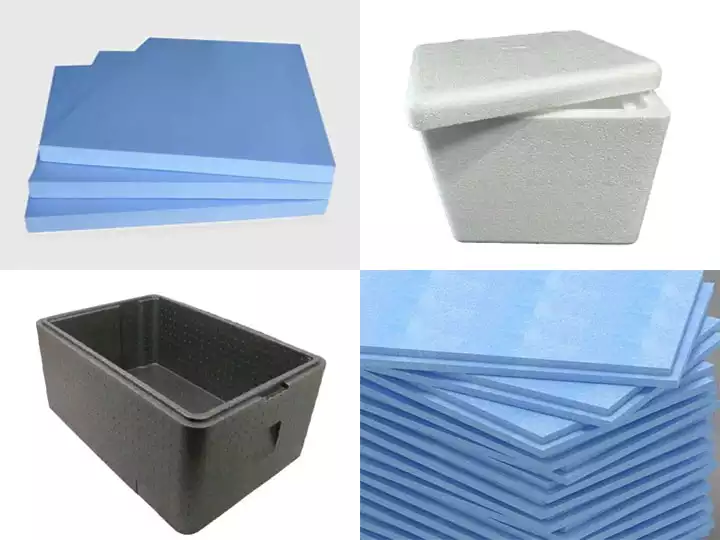随着塑料污染和泡沫处理的兴起,我们需要了解一些有关泡沫塑料回收的常识。我们将告诉您有关泡沫回收的基本问题所需了解的所有信息。
聚苯乙烯泡沫塑料对环境有害吗?

泡沫产品的处理,如盘子、蛋盒、杯子、包装插页、包装花生、冷却器等对环境有害。废弃 EPE(发泡聚乙烯)和 EPS(发泡聚苯乙烯)泡沫对环境的影响包括:
难以降解:EPE 和 EPS 泡沫都是塑料材料,需要数百年才能降解。这意味着它们会在环境中停留很长时间,从而造成积累。
微塑料污染:随着时间的推移,这些泡沫材料分解成微小颗粒,成为微塑料,进入土壤和水体并影响生态系统。
资源浪费:EPE、EPS的生产消耗石油等不可再生资源,废弃后无法回收,造成资源浪费。
温室气体排放:EPE和EPS在生产、运输和焚烧过程中释放温室气体,导致全球变暖。
聚苯乙烯泡沫塑料回收流程是怎样的?
机械回收
- 破碎:将废旧泡沫材料破碎成小块以供后续处理。此步骤可以使用专门的方法有效地完成 聚苯乙烯泡沫塑料粉碎机.
- 造粒:将破碎的泡沫颗粒通过造粒机进行加工 造粒机 转化为可在生产中轻松重复使用的回收颗粒。
- 热熔致密化:通过热熔 增稠剂,将破碎的泡沫加热至熔融状态,除去其中的空气,从而减小其体积(通常压缩比高达 90:1),以便于储存和运输。
- 冷压缩:将松散的泡沫材料放入 泡沫塑料压实机,它通过液压系统将泡沫压缩成块,减小其体积(通常压缩比可达60:1)以供后续处理或运输。
化学回收
溶解重塑:使用特定的化学物质溶解泡沫,将其转化为液态,然后进行重塑过程,生成新的塑料制品。该方法可以处理难以机械回收的泡沫材料。